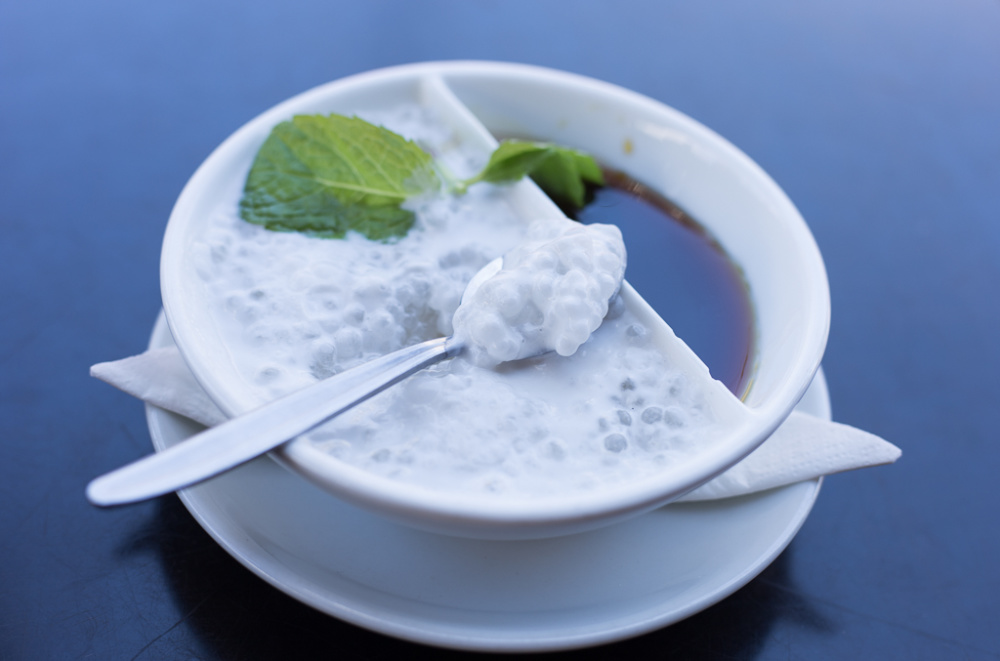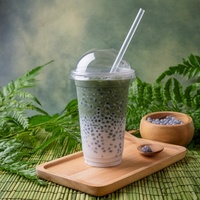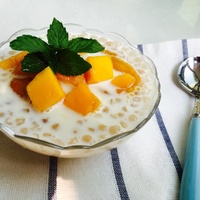Common name: Sago
Other common names: Smooth sago
Description
Sago is a starch-yielding palm from Southeast Asia and the South Pacific, its native range extending from Thailand, through Malaysia and Indonesia, to Papua New Guinea, the Philippines and Fiji.
At its largest, it is 20 m (65 ft) tall, though is more commonly between 10 and 15 m (33 and 50 ft) with a stout, barrel-like trunk supporting a crown of steeply arching fronds. The fronds are 5 to 7 m (16 to 23 ft) long from base to tip and typically palm-like, being made up of more than one hundred leaflets, each up to 1.5 m (5 ft) long and arranged in pairs along the length.
The trunk is light grey, ringed with leaf scars and with persisting leaf bases just below the crown. It is a clumping palm, sending up suckers from around the base, leading to the formation of dense stands over time.
The flowers are female or male borne on the same branching flower stalk that is very large, up to 6 m (20 ft) tall, extending above the leaves at the top of the palm. It flowers only once in its lifetime when around ten to fifteen years old then fruits and dies.
The fertilised female flowers are followed by small round fruit up to 4 cm (1.6 in) in diameter. They have yellow-brown, scale-like skin and enclose a nut at their centre with a single, hard seed inside.
Use
The trunk core or pith is one of the primary sources of sago, an edible starch extracted from some palms. The starch is extracted by felling the palm when the starch reserves are at their highest, which is just before or just after flowering, but before fruit-set.
After felling, the trunk is split length-wise and the white pith scraped out, mixed with water and then pounded to release the starch. The resulting solution is then strained and dried to produce sago flour. Yields of crude starch vary per tree, ranging on average from 110 to 136 kilograms (243 to 300 pounds), but with exceptional specimens yielding up to 400 kilograms (880 pounds).
Sago starch is used for making noodles, biscuits, bread, Sago pearls, as well as having use as a thickening agent, gelling agent and stabiliser in puddings, jellies, soups and many more dishes. It is also used to some extent in livestock feed formulations for poultry and other livestock.
Sago pearls, which are round, white, bite-sized pieces of cooked sago paste have become a popular addition to cold drinks and desserts in Southeast Asia, due to their playful, pearl-like appearance and chewy texture.
Sago starch is also one of only a few starches used in the textile industry for sizing and filling, which involves immersing the yarn in a starchy solution. This protects the yarn against injury during weaving, giving it temporary strength and abrasion resistance against the stresses and strains of the loom, as well as giving the finished fabric a closely woven appearance, body and a soft feel in the hand. Starches other than Sago used for sizing and filling include tapioca starch from Cassava (Manihot esculenta).

Sago pudding with mango puree

Sago pearls coconut pudding
Climate
Grows naturally in freshwater swamp environments in humid to very humid tropical lowlands climates, generally in areas with annual lows of 20 to 25°C, annual highs of 29 to 34°C, annual rainfall of 2000 to 6000 mm, and a dry season of 2 months or less.
Growing
New plants are grown from suckers dug up at the base of established palms. It performs best on deep, slow-draining clay and loam soils of an acid to neutral nature, generally with a pH of 4.0 to 7.0 and on sites with full sun exposure.
Commercial plantations are mostly established on peat soils, which are acidic and water retentive. Sago Palms are tolerant of seasonal flooding and soil salt conditions, reportedly being unaffected by salinity levels the equivalent of 4.5 grams of dissolved salt per litre of water, or approximately one-eighth the concentration of seawater.
Problem features
It produces fruit only once in its lifetime and the seed are seldom fertile, but it has a strong suckering habit that if unmanaged can lead to the formation of dense stands over time. It is listed as a weed in at least one reference publication but there does not appear to be any record of it anywhere as a serious weed.
Cultivated varieties are without spines but other common varieties produce sharp spines that can inflict injury on the unwary.
Where it grows
References
Books
-
Bladholm, L. 1999, The Asian grocery store demystified, 1st edition, Renaissance Books, Los Angeles, California
-
Blombery, A. M. & Rodd, A. N. 1992, An informative, practical guide to palms of the world : their cultivation, care and landscape use, (Revised edition), Angus & Robertson, North Ryde, New South Wales
-
Brady, G. S. & Clauser, H. R & Vaccari, J. A. 2002, Materials handbook : an encyclopedia for managers, technical professionals, purchasing and production managers, technicians and supervisors, 15th ed., McGraw-Hill, New York
-
Elevitch, C. R. 2006, Traditional trees of Pacific Islands: their culture, environment and use, 1st edition, Permanent Agriculture Resources, Holualoa, Hawaii
-
Food and Agriculture Organization of the United Nations. Food Policy and Nutrition Division 1989, Utilization of tropical foods: trees, Food and Agriculture Organization of the United Nations, Rome
-
Johnson, D.V. & Food and Agriculture Organization of the United Nations (FAO) 2011, Tropical palms (2010 revision), FAO, United Nations, Rome
-
Macmillan, H. F. 1943, Tropical planting and gardening : with special reference to Ceylon, 5th ed, Macmillan Publishing, London
-
Purseglove, J. W. 1981, Tropical crops: Monocotyledons, Longman, Harlow, London
-
Randall, R. P. 2002, A global compendium of weeds, R.G. and F.J. Richardson Press, Melbourne
-
Tacon, A. G. & Hasan, M. R. 2009, Feed ingredients and fertilizers for farmed aquatic animals : sources and composition, Food and Agriculture Organization of the United Nations (FAO), Rome
-
Van Wyk, B. E. 2005, Food plants of the world: an illustrated guide, 1st ed., Timber Press, Portland, Oregon






